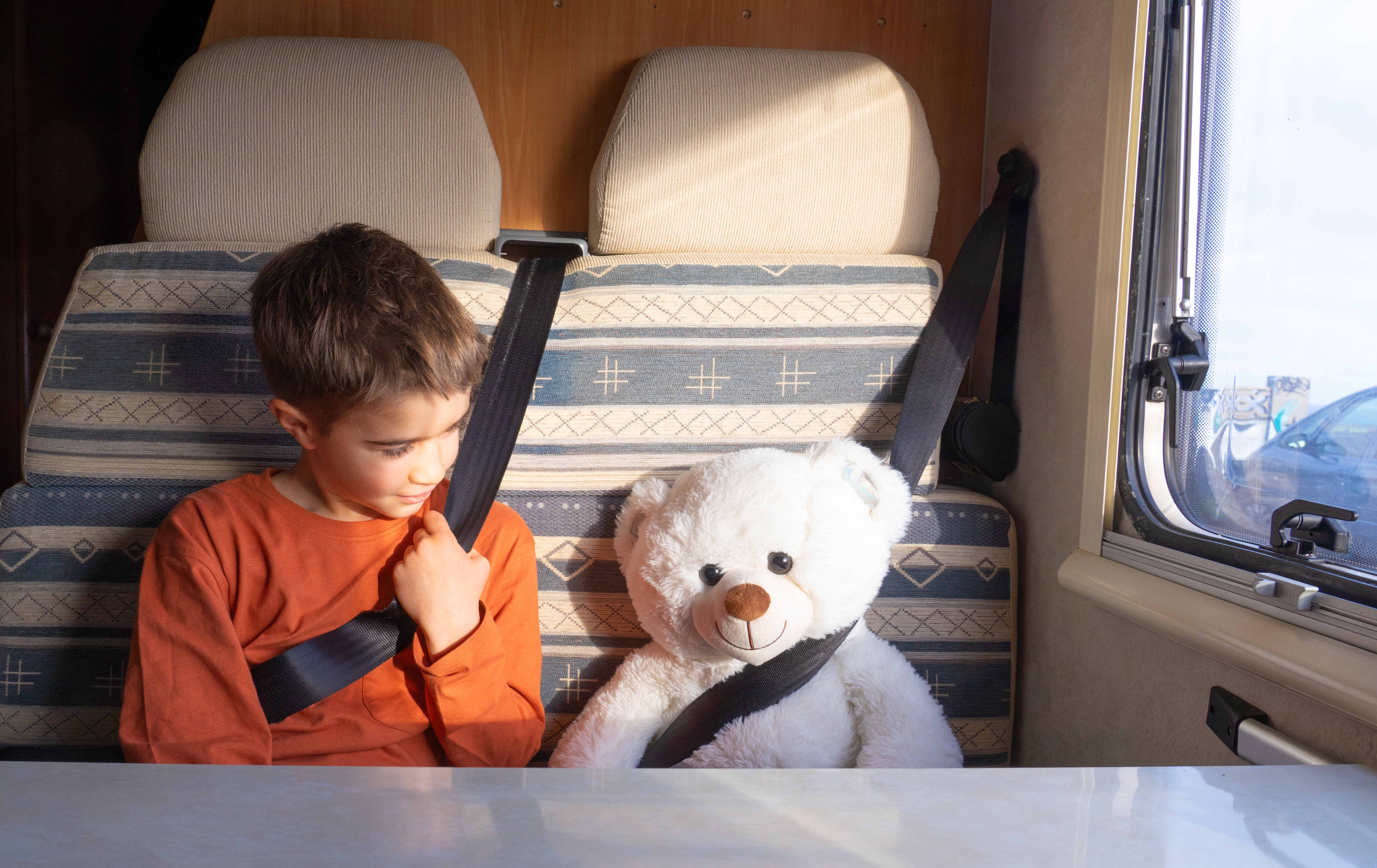Hit the Road with Confidence: Essential RV Safety Tips
Embarking on an adventure in your RV is thrilling! Picture this: you're cruising down the highway, new cities on the horizon, and the promise of discovering tucked-away spots. But remember, with great adventures come great responsibilities.
As you traverse unfamiliar territories, the likelihood of facing roadblocks or safety issues can increase. Plus, lengthy trips in your RV might lead to unexpected maintenance hitches, potentially raining on your parade.
No worries, though! Kunes RV is here to arm you with top-notch RV safety knowledge, ensuring your journey is as smooth as can be.
Get Your Rig Road-Ready: Pre-Trip Preparations
Before you rev up the engine and roll out, let's talk prep work. A trip to the mechanic should top your to-do list to give your vehicle the green light for travel. You and your Kunes RV service tech should dive into a detailed RV safety inspection, covering essentials like:
- Oil Levels: Check 'em and change 'em if needed.
- Fluids Check: Don't forget the transmission fluid and coolant.
- Tires: Inspect the tread, rotation, and pressure. Time for new tires? Find out before you go.
- Towing Gear: If you're pulling a vehicle, check the tow bar and safety cables.
- Attachments and Leaks: Make sure everything's secure and leak-free.
- Brakes Check: All brakes, including tow and parking brakes, must be in top shape.
- Gas Lines: Inspect the propane tank and exhaust for any signs of trouble.
- Safety First: Verify that safety labels are visible and detectors (smoke, propane, carbon monoxide) are functioning.
- Roof and Seals: Look for any leak indicators.
- Equipment Check: Test everything to ensure it's working as it should.
After ticking all these boxes, weigh and measure your RV, especially when it's packed. This step is crucial for navigating roads with height and weight limits. Typically, you'll find your RV's height details on the Manufacturer’s Certificate of Origin (MCO) or the manufacturer’s VIN sticker.
Plan Your Route Smartly
A little research goes a long way before hitting the open road. Scope out your routes to anticipate any weather conditions, ground hazards, or road restrictions.
Relying solely on a GPS? Think again. Manual route checks are key, as most navigation systems overlook height and weight constraints, not to mention the often higher tolls for RVs.
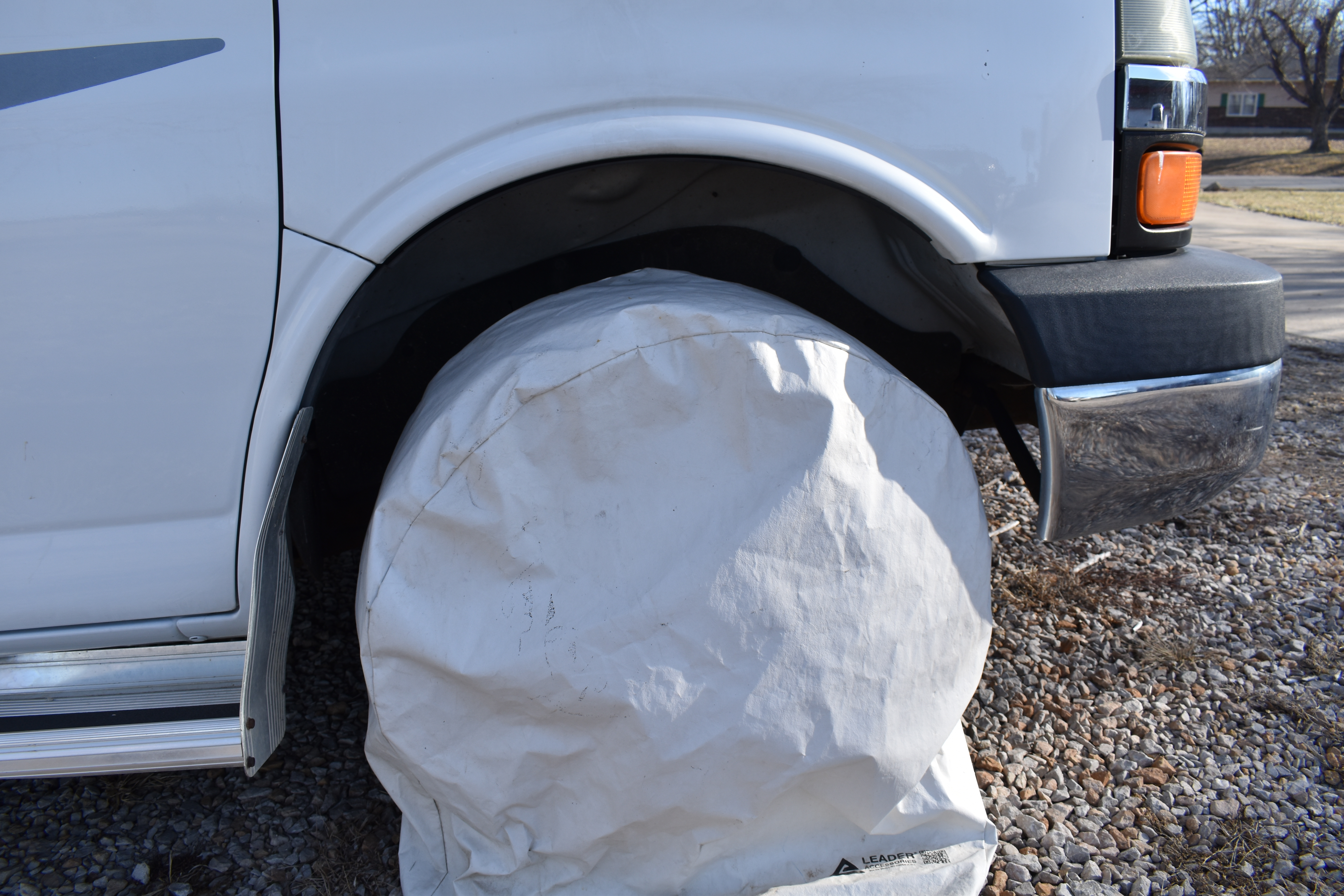
Crucial Tire Safety Guidelines for Your RV Trip
Embarking on a cross-country journey in your RV is an exhilarating experience, but did you know that covering hundreds of miles can significantly wear down your tires?
To keep your journey smooth and safe, it's crucial to focus on tire maintenance. At Kunes RV, we’ve written a guide to help you take care of your RV tires, ensuring they’re as ready for adventure as you are.
Secure Your Tires with Protection Plans
Invest in tire and wheel road hazard protection. Kunes RV offers affordable options that grant peace of mind while you explore far from home. This protection is a small price to pay for the assurance that your tires can handle the journey ahead.
Cover Your Tires, Including the Spare
When not cruising the highways, shield your tires from the elements. Tire covers are vital in preventing damage from ozone and ultraviolet (UV) light, prolonging their lifespan and ensuring they remain in top condition.
Clean Your Tires Regularly
Dirt and grime aren't just unsightly; they can also cause tire damage. Regular cleaning helps prevent cracking and tread loss, keeping your tires in optimal condition for longer.
Monitor and Maintain Tire Pressure
Keeping an eye on tire pressure is critical. Fluctuations in pressure can lead to blowouts, so carry a reliable tire pressure gauge. Remember, tire pressure can drop in colder weather, so adjust accordingly to maintain the correct level.
Handle Tire Air with Care
If you need to release some air from your tires, wait until they’ve cooled down. Removing air from hot tires can cause them to under-inflate once they cool, leading to potential tire stress and wear.
Park Your RV Correctly
Always ensure your RV is blocked and leveled when parked, especially at a campsite. Proper parking supports tire health and the overall stability of your RV.
Choose the Right Cleaning Products
Avoid products with petroleum, alcohol, or petrochemicals when cleaning your tires. These substances can degrade the protective layers on your tires, increasing the risk of cracking.
Know When to Replace Your Tires
Tire age matters. Replace any tire that's older than five years or when the tread depth approaches 1/16 of an inch. Even if they look fine, old or worn tires can be a safety hazard.
Maintain Continuous Insurance Coverage
Keep your RV insured, even when it's parked. Unforeseen damages can occur at any time, and continuous insurance coverage helps protect your investment.
For those financing their RV, consider GAP insurance from Kunes RV. This ensures that in the event of a total loss, you’re not left paying off a loan on an unusable RV.

RV Driving and Parking Safety: Tips for the Road
Navigating an RV requires a blend of caution, awareness, and preparation due to its size and weight. At Kunes RV, we want to ensure your travels are safe and enjoyable. Explore this thorough reference guide for RV safety practices in driving and parking, perfect for a safe and uninterrupted journey.
1. Master the S.A.F.E. Cornering Technique
Handling an RV's bulkiness, especially around corners, can be tricky. Here’s where the S.A.F.E. method comes into play:
- Slow Down: Approach turns at a reduced speed to avoid sudden braking.
- Arc your Turn: Make a wide, arcing turn, which helps signal your intentions to other drivers and ensures a safer maneuver.
- Finish the Turn: Make sure the rear end of your RV clears the corner completely before you stop.
- Experience: Practice makes perfect! The more you drive, the better you'll handle these situations.
2. Adopt a Slower Pace
Given that RVs are slower to react than cars, it’s wise to adjust your driving speed accordingly:
- Drive below the posted speed limit to enhance your reaction time.
- Extend your following distance to avoid close encounters with the vehicle ahead.
- When merging or changing lanes, allow for extra space—think 20% more than usual.
3. Navigate with Extra Care
The height of an RV can lead to challenges, such as avoiding low-hanging branches or ground obstacles:
- When parking in tight spots, have a passenger guide you from outside.
- Use walkie-talkies to communicate with helpers outside the RV, ensuring safe maneuvering.
- Whenever possible, exit parking spots by moving forward to avoid tricky blind spots.
4. Ensure Visibility to Other Drivers
Even though an RV is large, other drivers might not always see it clearly, increasing the risk of accidents:
- Signal turns well in advance—about 100 feet before the turn—to alert other drivers.
- Slow down gradually before your turn, especially if you need to pass an exit first, to give clear signals to drivers behind you.
- Change lanes or pass with caution, always mindful of others on the road.
- If you’re being tailgated, maintain a steady speed and allow the other vehicle to pass safely.
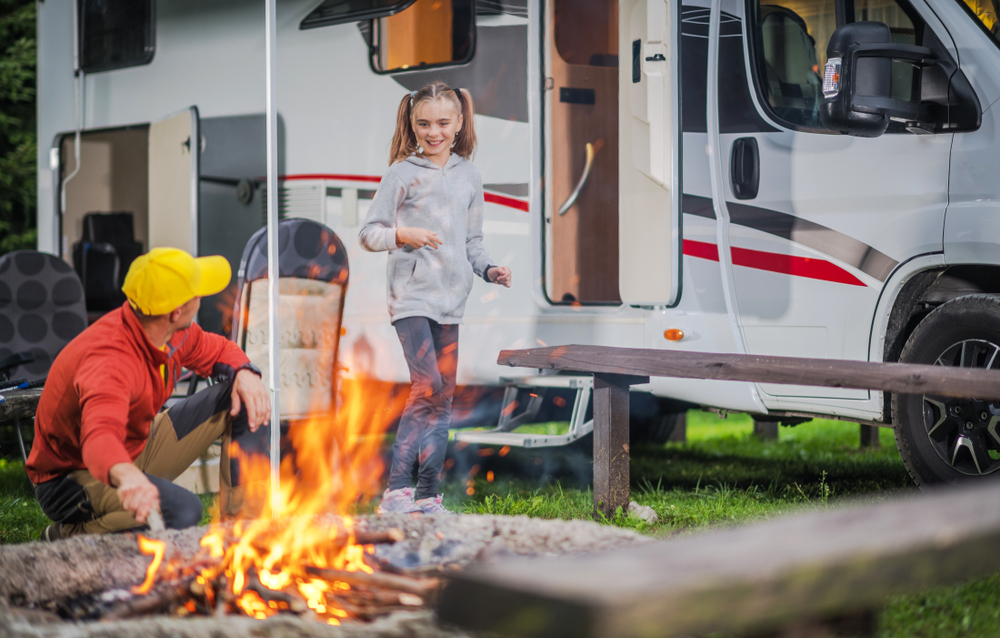
Ensuring Your Child’s Safety on RV Road Trips
Embarking on an RV road trip can be an exhilarating family adventure. However, when traveling with children, their safety becomes a top priority. Kunes RV is here to guide you through the essentials of RV passenger safety for children, so you can enjoy a worry-free journey.
Never Leave Children Unattended
The first rule of thumb is straightforward: never leave children unattended in an RV, especially a towable one. For optimal safety, children should ride in the passenger vehicle with adults. Travel trailers are not designed for passengers while in motion, making it risky for children to be inside them during travel.
Keep Children Seated and Secure
Just like in a car, children in drivable RVs should remain seated and buckled up. Their seat belts are crucial for safety, just as they are in any vehicle. If there’s a need for a bathroom break or stretching legs, opt to stop at a rest area or a safe location rather than moving around in a moving RV.
Adhere to Car Seat Regulations
RV travel doesn't exempt you from car seat laws. The same rules apply: if your child needs a car seat in a car, they need one in an RV too. Ensuring your child is in an appropriate car seat or booster is vital for their safety during the trip.
Minimize Driving Distractions
Kids being kids, can easily become restless and distracting. Having another adult on board can be a game-changer, allowing you to focus on driving while they tend to the children’s needs. This teamwork makes for a smoother and safer ride for everyone.
Stay Safe on the Road: RV Fire Safety Essentials
Traveling in an RV offers unparalleled freedom and adventure, but it's vital to prioritize safety, particularly when it comes to fire risks. Kunes RV is committed to your safety, providing essential tips and practices to fire-proof your RV journey. Here’s what you need to know about managing fire risks and ensuring your RV is equipped for safety.
Propane Tank Safety
Propane is a common fuel source in RVs, used for heating and cooking. To prevent fire hazards associated with propane tanks, follow these guidelines:
- Cook with Care: Never leave your stove or oven on while driving. Always cook with the RV parked and turn off all appliances after use.
- Refueling Rules: Before refueling your RV, ensure the engine and propane appliances are off to prevent igniting fuel vapors.
- Tank Treatment: Resist the urge to paint your propane tank. Paint can lead to overheating by absorbing sunlight.
- Safety Features: Older tanks should be checked for an overfill protection device. For added safety, use a propane gas detector along with your smoke alarm.
- Regular Cleaning: Keep the intake and exhaust vents of your propane tank clear from blockages.
- Routine Inspections: Regularly check for leaks or damage to your propane system, especially before and after long trips.
Fire Readiness in Your RV
RVs can be more susceptible to fires than cars, so having the right equipment and plans in place is crucial:
- Smoke Detectors: Install at least one smoke detector in both the sleeping and kitchen areas. Battery-operated smoke detectors designed for RV use are available at hardware stores.
- Fire Extinguisher: Keep a fire extinguisher in your RV, and store it in a stable temperature environment when not in use.
- Regular Testing: Regularly test your smoke detectors and make sure all passengers recognize their alarms.
- Emergency Planning: Develop and practice a fire safety plan so everyone knows how to react if a fire occurs.

Safety Tips for Unexpected RV Emergencies
Adventuring in an RV brings excitement and memorable experiences, yet unexpected emergencies can arise. It's vital to be prepared and know how to act swiftly to protect yourself and your companions. Kunes RV provides essential safety tips to help you navigate emergency situations effectively.
Tornado Safety in Your RV
Tornadoes can strike with little warning, particularly in certain regions. Here's how to stay safe during severe weather conditions:
- Stay Calm: Keeping calm helps you think clearly and make safer decisions.
- Keep Your Phone Charged: Ensure your cell phone has enough battery in case you need to contact emergency services.
- Avoid Driving in Severe Weather: Don't try to outrun a tornado. Find the nearest shelter instead.
- Seek Solid Shelter: Always opt for a sturdy building over an RV when tornado warnings are issued.
- Utilize RV Park Storm Shelters: Many RV parks have storm shelters. Contact park management for information.
- Lie Low if Caught Outside: In absence of better options, lie in a ditch or low ground, protecting your head, to minimize risk.
- Stay in the RV if Boondocking: In remote areas without shelters, stay in your RV, away from windows, and protect yourself with blankets or towels.
- Choose Safe Parking: If remaining in the RV, park in open areas away from potential hazards like power lines or trees.
Secure Your Interior: Use safety straps and other measures to secure items inside your RV during storms.
Navigating Out of a Rut
Getting stuck can happen to any RVer. Here’s how to get unstuck safely:
- Ease Off the Gas: When stuck, gently brake instead of applying hard pressure, which could worsen the situation.
- Straighten the Steering Wheel: Align your wheels before making maneuvers to exit the rut.
- Steer Gently: Slowly and steadily steer out of the rut without abrupt wheel movements.
RV Towing Safety
Even short trips can end with unexpected towing needs. Here's what to consider in a roadside assistance plan:
- Understand Towing Limits: Know how far your assistance plan will tow your RV and under what conditions.
- Check Coverage for Passenger Vehicles: Ensure your plan includes towing for any vehicle you’re traveling with.
- Know Your Insurance Benefits: Understand what your insurance covers versus what's provided by roadside assistance.
5 RV Camping Safety Tips for Beginners
RV camping combines the freedom of the open road with the joys of the great outdoors. However, staying safe during your adventure is crucial, both while driving and when settled at your campsite. Here are five vital safety tips from Kunes RV to ensure you and your companions stay protected during your RV camping trips.
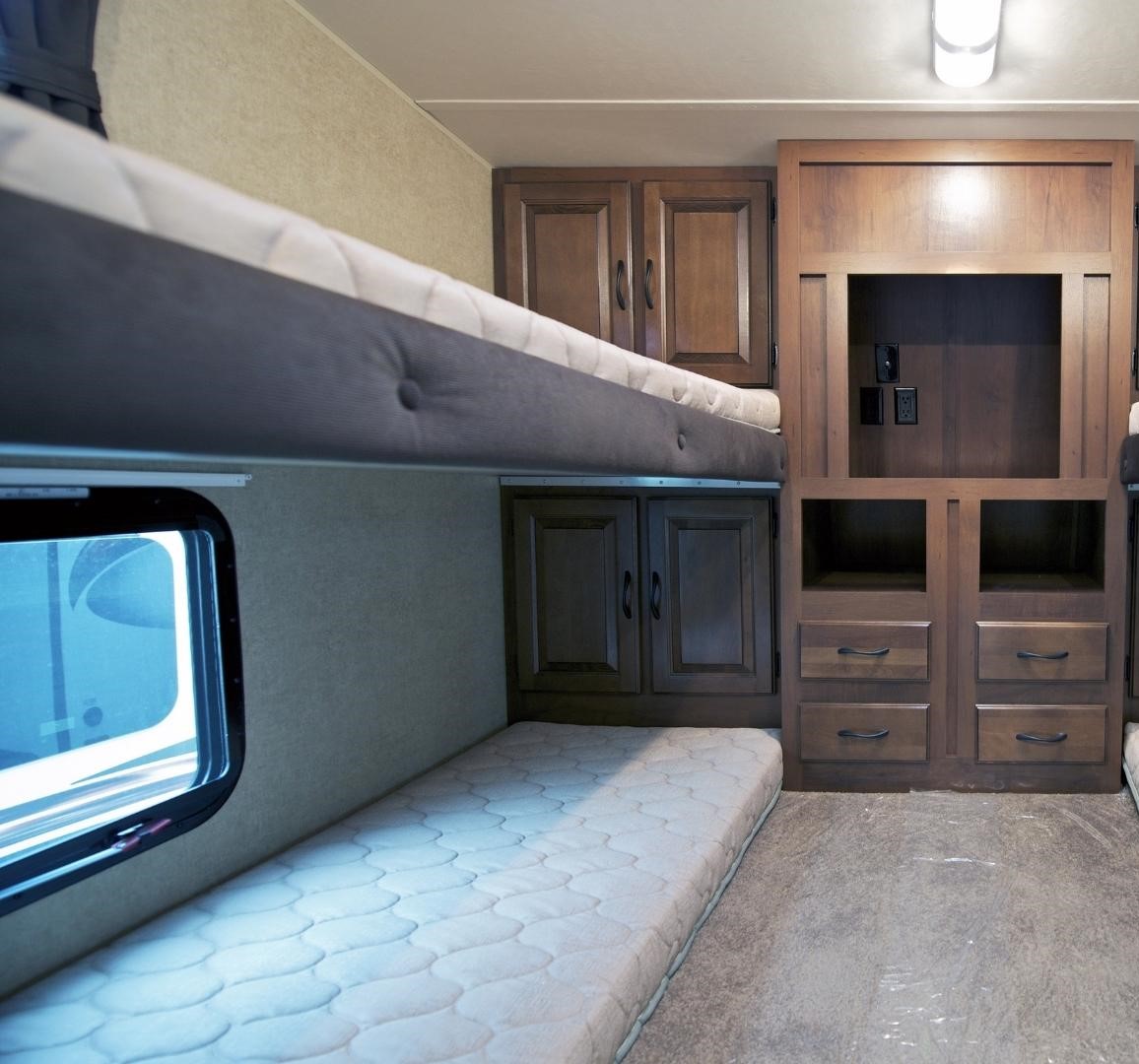
1. RV Bunk Bed Safety
Bunk beds in an RV are great for maximizing space but come with their own safety considerations:
- Nighttime Navigation: Equip everyone in upper bunks with a flashlight to safely navigate down in the dark.
- Prevent Sleepwalking Accidents: Sleepwalkers should opt for the lower bunk to minimize injury risks.
- Fall Prevention: Place a futon or cushion on the floor near the upper bunk to soften any falls.

2. RV Bear Safety
Camping in bear territory requires extra precautions:
- Know Your Area: Check with local guides or online resources to know if bears are prevalent near your campsite.
- Secure Your Trash: Keep food waste and garbage secured and away from your RV to avoid attracting bears. Hang trash bags high in trees if proper disposal bins aren't available.
- Carry Bear Deterrents: Have bear spray or a wildlife whistle handy when in bear-prone areas.
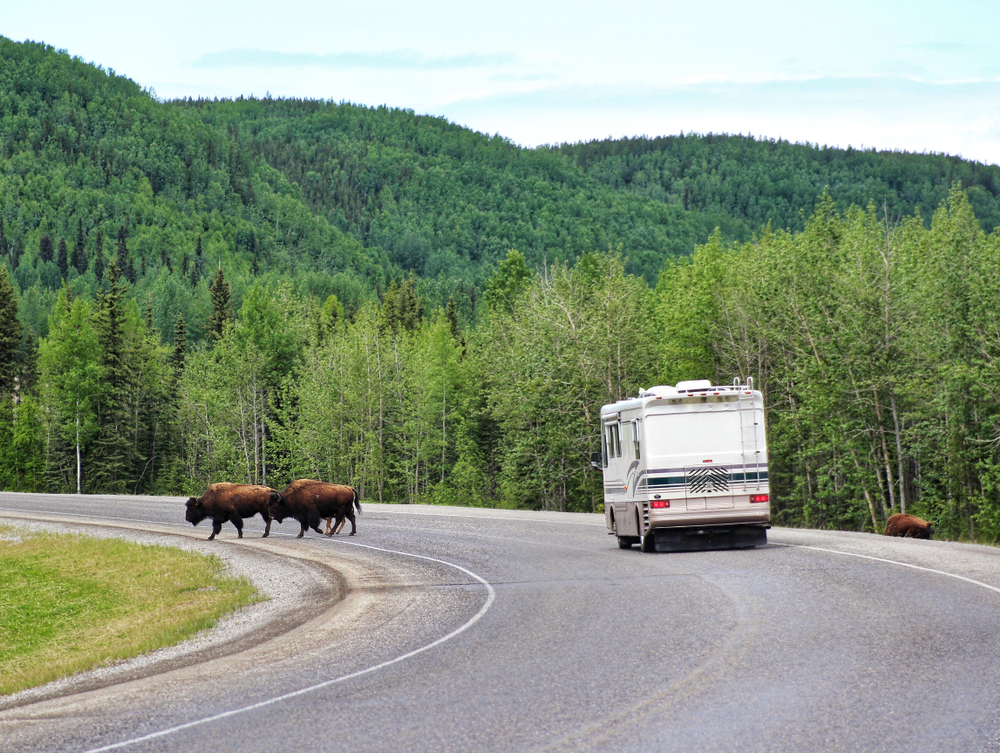
3. RV Desert and Forest Wildlife Safety
Desert and forest regions host wildlife like snakes and scorpions:
- Stay Informed: Follow campground rules and posted warnings about local wildlife.
- Do Your Homework: Research the wildlife risks of your camping destination before arrival.
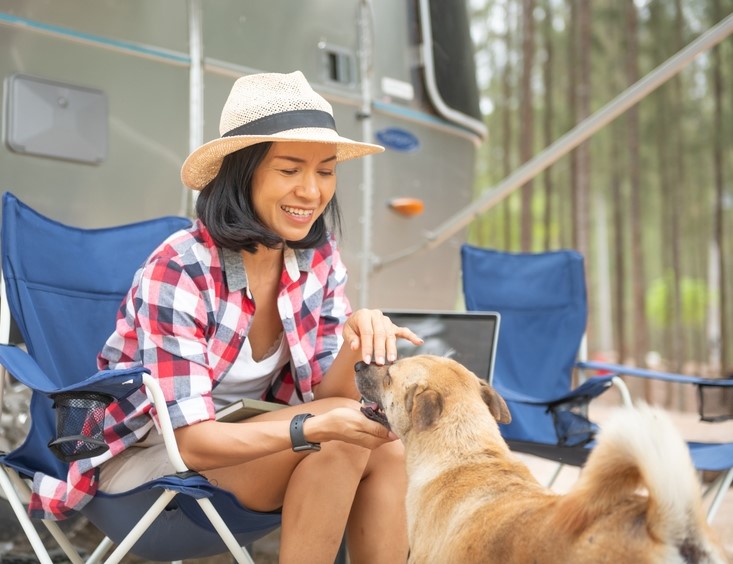
4. RV Pet Safety
Traveling with pets? Keep them safe and comfortable:
- Keep Pets Close: Have your pets in the same area where you are while driving, even if using a travel trailer.
- Secure Them Properly: Use a comfortable crate for pets unfamiliar with travel to prevent anxiety and protect your RV’s interior.
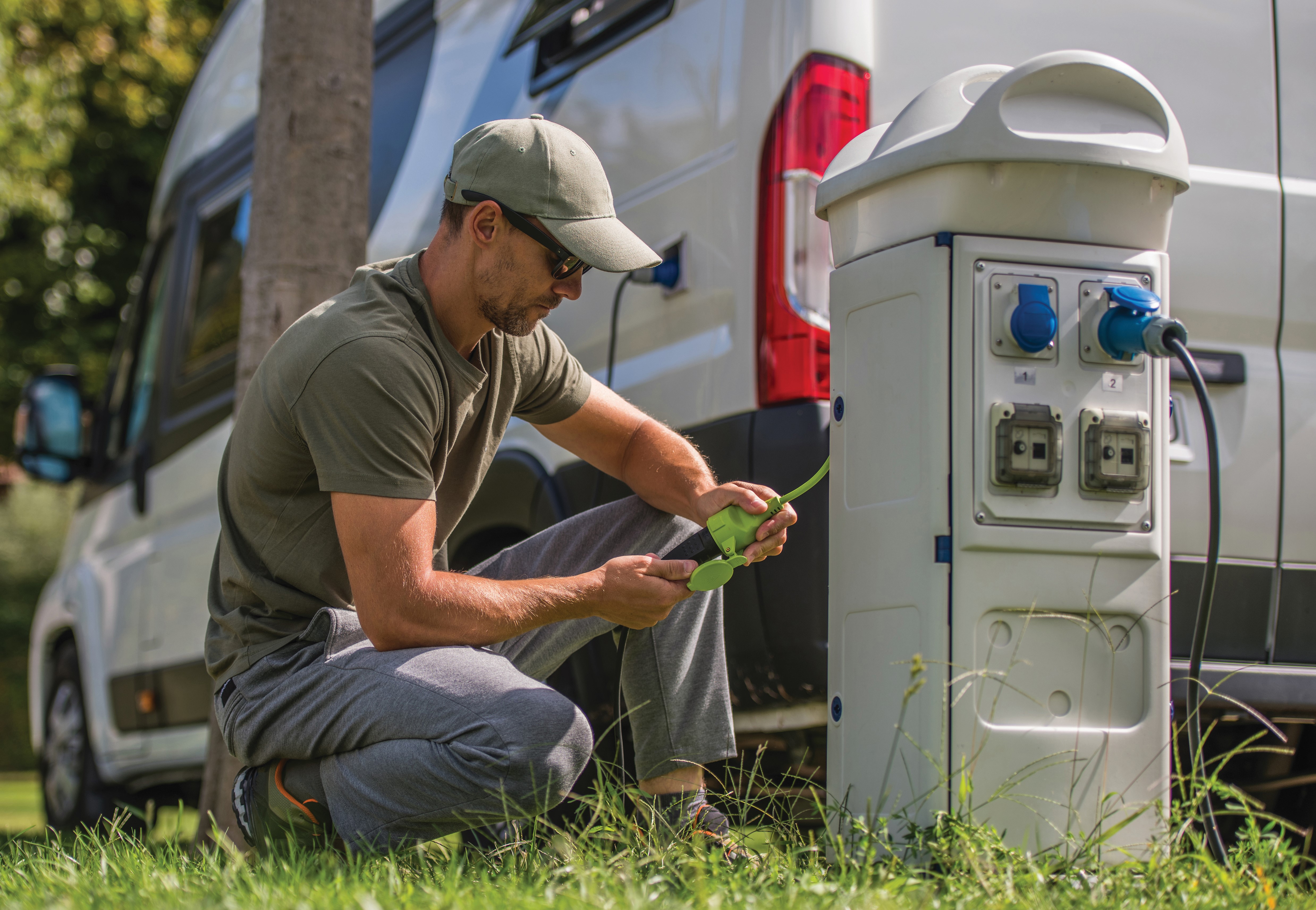
5. RV Electrical Safety
Understanding your RV’s electrical system is key to avoiding power issues:
- Know Your Limits: Be aware of your RV’s electrical capacity, whether 30 or 50 amps, and manage your appliance usage accordingly.
- Calculate Consumption: Convert watts to amps (if necessary) by dividing the wattage by volts to ensure you don’t overload your RV’s electrical system.
As you gear up for your next RV adventure, remember that preparation, knowledge, and vigilance are your best companions on the road. At Kunes RV, we're dedicated to ensuring your travels are not only enjoyable but also safe.
By adhering to the comprehensive safety tips outlined in this guide, from pre-trip preparations to navigating the nuances of RV driving, parking, and living, you're setting the stage for a journey that's as secure as it is memorable.
So, buckle up, check your mirrors, and embrace the freedom of the open road with confidence, knowing you're well-equipped to handle whatever comes your way.
Happy travels, and remember, safety is the journey, not just the destination!


